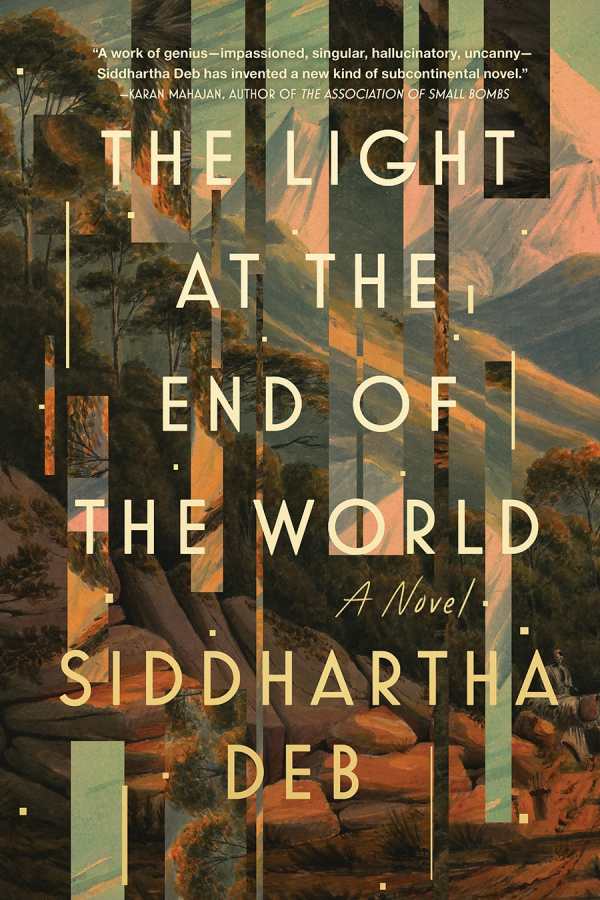
The Light at the End of the World
Siddhartha Deb’s robust novel The Light at the End of the World explores India across four timelines, drawing forth the country’s agonizing secrets, linked dangers, and unexpected residents.
In a feverish, near apocalyptic future, Bibi is a former journalist and a current global consulting firm employee. When a conspiracy theorist whom she knew vanishes, she’s tasked with finding him. Her cat-and-mouse pursuit of him through Delhi’s dense surroundings alternates with reflections on her own restricted, harangued life, culminating in a panoptic view of politics and mystery that yields a cryptic clue.
In 1984, a hitman tails a chemical factory operator in Bhopal’s slums, befriending him to learn about the factory’s real story, only to learn that everyone is ruled over by unknown puppetmasters and that disaster is impending. In 1947, a Calcutta veterinary student is plagued by fears surrounding an exam, necessitating visits with a psychoanalyst. He also hopes to pilot an aircraft that’s being overseen by a secret committee. And in 1859, a British soldier whose regiment was meant to search for a fugitive is waylaid at a displaced Mughal’s bewitching home, which doubles as an odd museum.
These four story lines—each told in a distinct narrative style—are bound together by overlapping concerns regarding visible, hidden, social, and personal traumas. They cover background tensions with Pakistan, poverty, and famine. India’s larger problems are seen in the lives of its individual residents as they summon enough courage to face their environments head-on, despite their apparent powerlessness. Images of monkeys, Gandhi lookalikes, and collections of curiosities also run throughout, forming a robust collage that reflects a rich, uncanny imagination.
In the wide-ranging, rhapsodic novel The Light at the End of the World, unearthed stories illuminate the coverups in the official versions of history.
Reviewed by
Karen Rigby
Disclosure: This article is not an endorsement, but a review. The publisher of this book provided free copies of the book to have their book reviewed by a professional reviewer. No fee was paid by the publisher for this review. Foreword Reviews only recommends books that we love. Foreword Magazine, Inc. is disclosing this in accordance with the Federal Trade Commission’s 16 CFR, Part 255.
